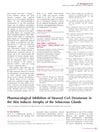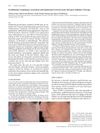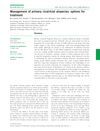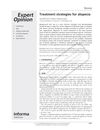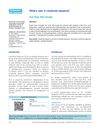Emerging Therapies for Acne Vulgaris
March 2018
in “
American Journal of Clinical Dermatology
”
nadifloxacin sarecycline omiganan pentahydrochloride topical nitric oxide selective retinoic acid receptor antagonists Cortexolone 17a-propionate finasteride photodynamic therapy microcurrent therapy laser and light therapies EGCG biologics interleukin pathways zileuton SCD1 Olumacostat glasaretil selective cryolysis Botulinum toxin A probiotics C17AP Propecia PDT green tea extract Botox

TLDR New acne treatments show promise as alternatives to traditional therapies.
The document from 2018 reviews a range of emerging therapies for acne vulgaris, including new pharmacological agents, laser and light therapies, and botanical treatments. It highlights the potential of novel drugs such as topical fluoroquinolone nadifloxacin, new tetracyclines like sarecycline, omiganan pentahydrochloride, topical nitric oxide, selective retinoic acid receptor antagonists, and anti-androgens like Cortexolone 17a-propionate (C17AP). Clinical trials are mentioned, such as one with 12 female patients showing improvement in acne and alopecia symptoms with finasteride, and another with 69 clinical trials supporting the efficacy of photodynamic therapy. The document also discusses the use of microcurrent therapy, combination therapies with laser and light, botanical treatments like EGCG from green tea, and biologics targeting interleukin pathways. Additionally, it covers oral zileuton, sebum production inhibitors like SCD1 and Olumacostat glasaretil, selective cryolysis of sebaceous glands, neuromodulating agents like Botulinum toxin A, and probiotics for their anti-inflammatory effects. The conclusion emphasizes the evolution of acne treatments as the understanding of acne pathogenesis improves, with new therapies potentially offering effective alternatives to traditional treatments.
